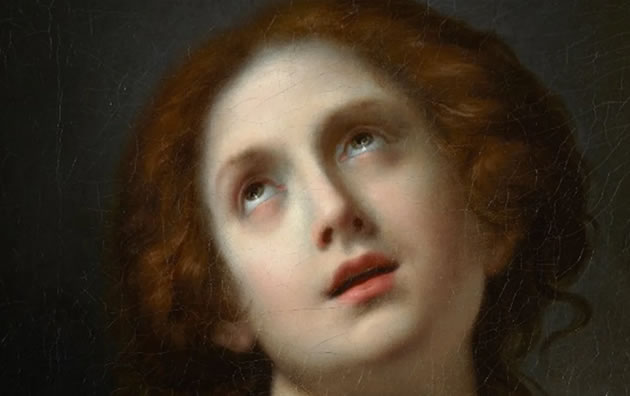Exhibition Explores the Meteoric Rise of a Financial Dynasty
Treasures of Osterley – Rise of a Banking Family features Dolci’s St Agatha

A new exhibition is providing a chance to see Osterley House’s extensive collections in a new way.
The splendour of Osterley Park and House is well-known to local people, but the story of the banking family whose fortune filled the estate with treasures has not been fully explored until now.
The Child family counted monarchs, mathematicians and actors as customers at their bank, but now the family themselves will be in the spotlight.
This exhibition uses the fine furniture and works of art the family collected to shed new light on their rapid rise and the world in which they lived.
The exhibition begins by introducing visitors to the individuals in the family who made their banking business the most successful of its kind in Britain and their prominent clients including Sir Isaac Newton, monarchs William and Mary and Nell Gwyn.
Each object in the exhibition has been chosen to provide a glimpse into the Childs’ lives and work, from an original iron strongbox in which gold bullion, jewellery and other valuables were stored, to a ‘timeline’ of gold and silver coins which tell the story of national economic events. Also on display are Chinese porcelain punch bowls of the quality that Child’s Bank offered as lottery prizes.
Visitors will then be able to see objects acquired by the family from around the world, including a set of lacquer furniture, porcelain plates commissioned from China with the Child coat of arms, and a seventeenth century French ebony cabinet, usually displayed with its doors closed, which will be opened to show its intricate interior.
John Chu, National Trust Assistant Curator of Pictures and Sculpture explains, “The Child family’s road to fortune began in the late seventeenth century with Sir Francis Child, one of the first English goldsmiths to move into what we would now recognise as modern banking during the Financial Revolution which transformed the nation’s economy.
“The rise of the Child family was quite meteoric. They were major investors in London’s emerging stock markets, and their family banking business on Fleet Street competed with the newly founded Bank of England to lend to the government at high rates of interest.
“Despite the inherently risky nature of such a venture, Sir Francis and his sons went from strength to strength, and as their wealth grew, so did the number of treasures we can now see at Osterley.”
Three of Sir Francis Child’s sons each in turn took over the family bank but it was Robert who collected art on a grand scale. This included a painting of the early Christian martyr Saint Agatha, by Italian artist Carlo Dolci. A dramatic depiction of Agatha of Sicily, it captures the miraculous moment when Saint Peter the Apostle appeared to her in a vision and healed her wounds.
Recently acquired by the National Trust for Osterley, the painting will be the finale to the exhibition. The homecoming of Saint Agatha provides the chance to look more closely at the importance of art to the story of the house. She is being displayed in a specially constructed walk-in ‘vault’, to enable visitors to sit inside and reflect.
The painting depicts the Christian martyr Saint Agatha of Sicily (c. 231 – 251 BC). During the persecution of Christians by the Roman Emperor Decius, she was raped and tortured, including having her breasts excised with pincers. She clutches a white cloth to her chest, covering her wounds; only the smudges of blood on the cloth and her skin hint at the horror of her martyrdom. The painting was probably understood as a depiction of the moment when a vision of Saint Peter appeared to Agatha in the midst of her ordeal and miraculously healed her wounds.
The picture is the creation of Carlo Dolci, one of the leading figures of seventeenth-century Florentine art and famous across Europe. As an artist of the Counter Reformation, he used the passionate rhetoric of Baroque painting to inspire veneration of the divine in his viewers.
John Chu continues, “This exhibition is a chance to explore the opportunistic world of financial speculation and gritty commerce of three centuries ago. It’s about a family who played for high stakes and came up trumps as other big speculators fell prey to the era’s booms and busts.
“Visitors will be able to glimpse beneath the splendid surface of the family’s prized possessions to discover their significance. What did these objects mean to the Childs and to the original cultures that created them at a transformative time in international trade and finance?
“I hope everyone who visits will come away with a deeper insight into Osterley and the family and treasures so entwined with it.”
An online version of the exhibition is also available on the National Trust Collections website.
‘Treasures of Osterley – Rise of a Banking Family’ runs from 4 November 2019 – 23 February 2020. Access to the exhibition is included in the standard entry price to the house.
For further information and opening dates and times visit www.nationaltrust.org.uk/osterley
Related links
|